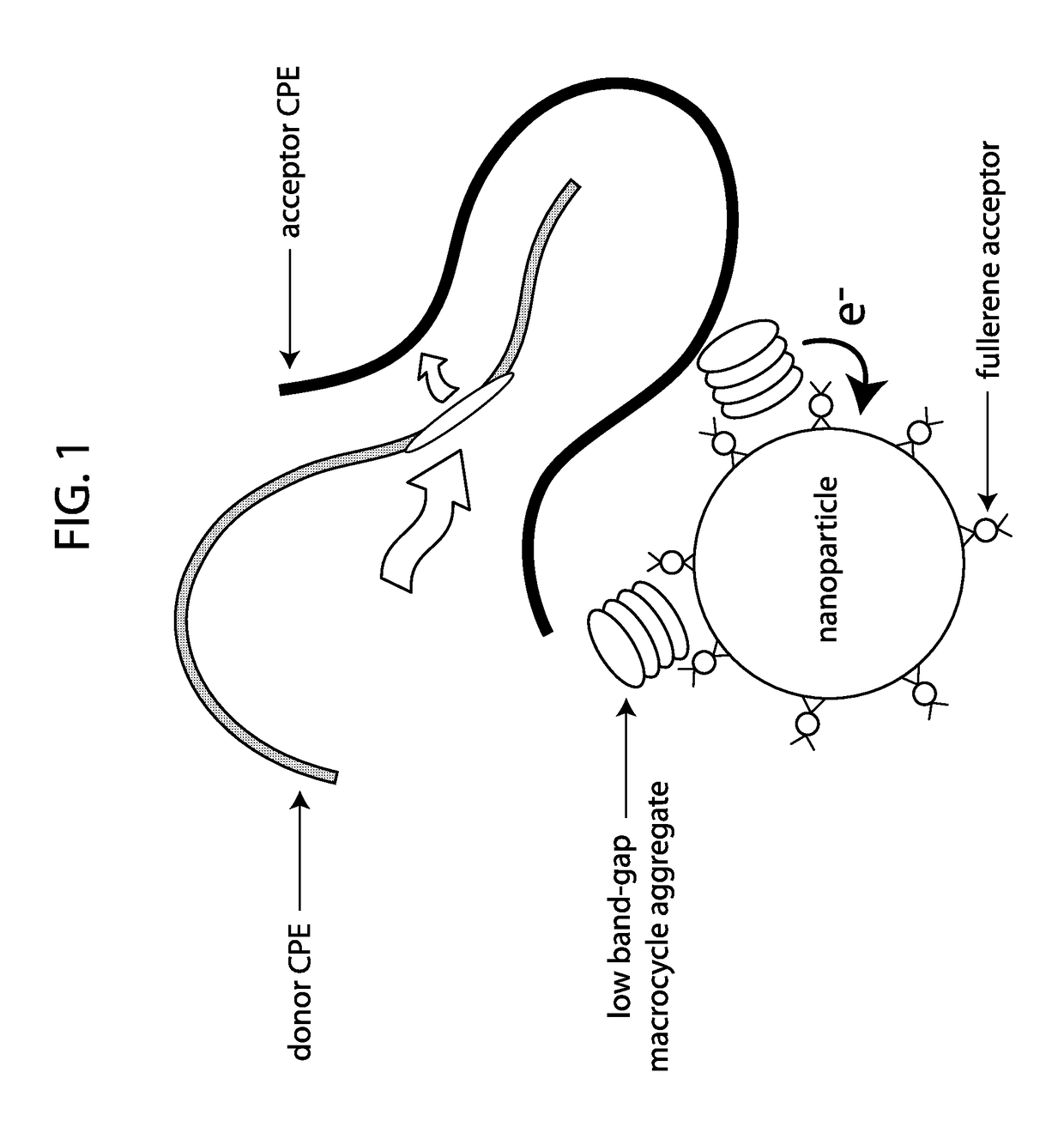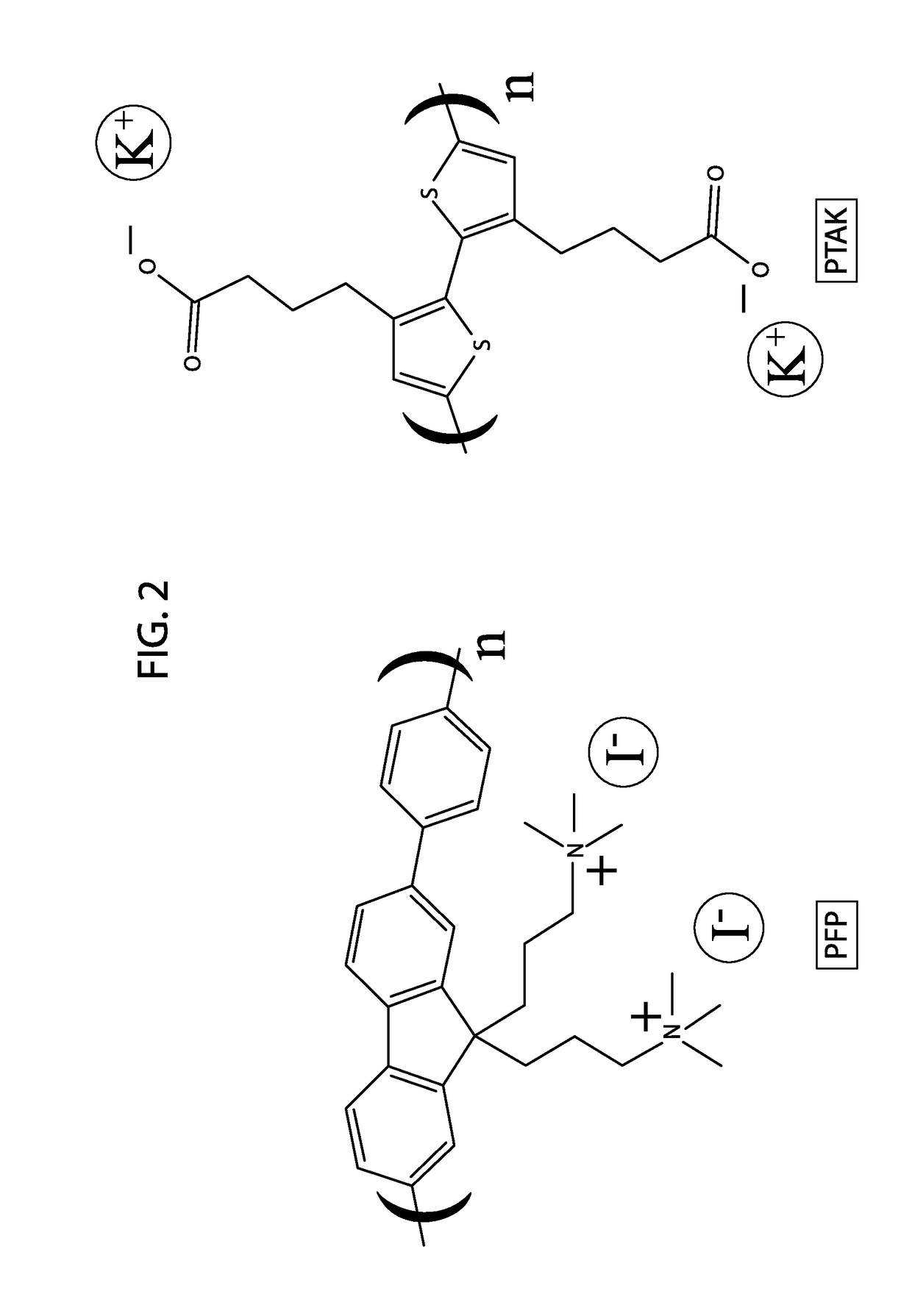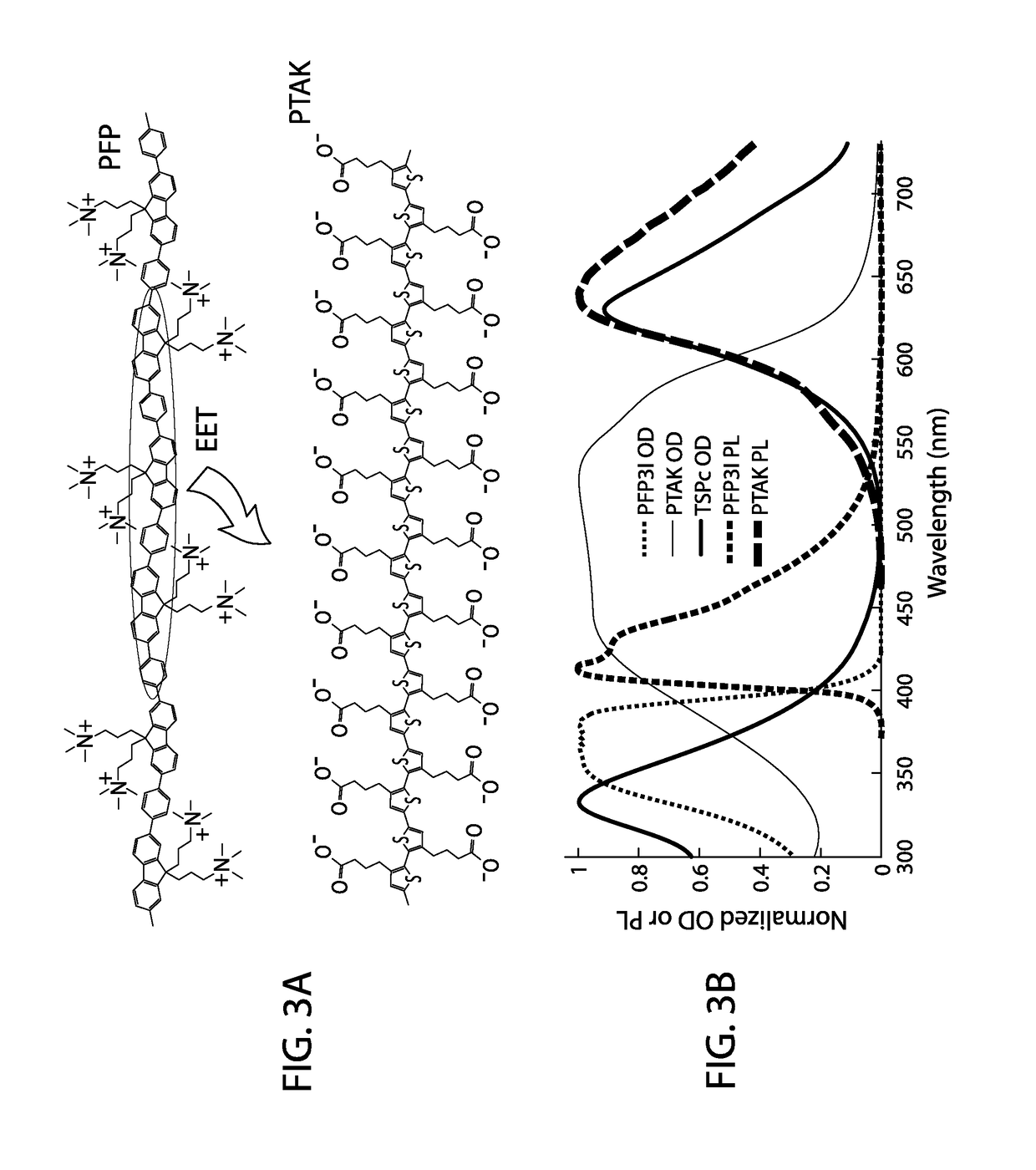Complementary conjugated polyelectrolyte complexes as electronic energy relays
a polyelectrolyte complex and electronic energy relay technology, applied in the field of artificial photosystems, can solve the problems of large-scale storage difficult, plant and bacteria have evolved an exceedingly complex photosynthetic machinery, and the energy density of charge storage devices is relatively low
- Summary
- Abstract
- Description
- Claims
- Application Information
AI Technical Summary
Benefits of technology
Problems solved by technology
Method used
Image
Examples
example 1
[0121]Introduction
[0122]In some embodiments, the technology of the present application relates to the absorption, energy funneling and charge transfer functions of photosystems. The use of conjugated polyelectrolytes (CPEs)—semiconducting polymers bearing ionizable sidechains is described herein. (Iii, S. W. T.; Joly, G. D.; Swager, T. M. Chemical Sensors Based on Amplifying Fluorescent Conjugated Polymers. Chem. Rev. 2007, 107, 1339-1386; Jiang, H.; Taranekar, P.; Reynolds, J. R.; Schanze, K. S. Conjugated Polyelectrolytes: Synthesis, Photophysics, and Applications. Angew. Chem. Int. Ed. Engl. 2009, 48, 4300-4316). Due to their light-harvesting backbones and charged (or dipolar) sidechains, CPEs are uniquely positioned to simultaneously serve as electronic energy relays and macromolecular scaffolds for meso-scale electronic and excitonic donor / acceptor complexes. Using CPEs in light-harvesting assemblies obviates the need for an optically inactive scaffolding, thereby raising the d...
example 2
[0142]Donor / Acceptor CPE Complexes
[0143]To gain a comprehensive understanding of CPEC formation and stability, the initial focus can be on the PFP:PTAK CPEC. This model CPE pair can be used to determine the relationship between EET and its dependence on the structure of both the solution and solid / coacervate phases.
[0144]Salt-Free PFP:PTAK CPECs
[0145]A number of questions about salt-free PFP:PTAK are important to consider: How does the microstructure of the CPEC evolve as a function of total polymer concentration and charge ratio, particularly in the vicinity of the gelation point? While not wishing to be bound by one particular theory, as the interconnected CPE network densifies, it is expected that the EET dynamics will reflect the local and long-range connectivity of the donor and acceptor polymers. What is responsible for the evolution of the PTAK PL spectrum within a PFP:PTAK CPEC as the PTAK concentration is increased? While not wishing to be bound by one particular theory, on...
example 3
[0161]RC Formation and Interaction with LHA
[0162]In natural photosystems, the RC is composed of a special pair consisting of a donor chromophore that differs from peripheral LHA and a photoexcited electron acceptor. The LHA complexes funnel their excited states directionally to the special donor chromophore, which then transfers an electron to the acceptor. The spatially separated electron / hole pair is the precursor state to fuel-generating photochemistry. (Gust, D.; Moore, T. a; Moore, a L. Mimicking Photosynthetic Solar Energy Transduction. Acc. Chem. Res. 2001, 34, 40-48; Kodis, G.; Liddell, P. a.; Moore, A. L.; Moore, T. a.; Gust, D. Synthesis and Photochemistry of a Carotene-porphyrin-fullerene Model Photosynthetic Reaction Center. J. Phys. Org. Chem. 2004, 17, 724-734; Gust, D.; Moore, T. a; Moore, A. L. Solar Fuels via Artificial Photosynthesis. Acc. Chem. Res. 2009, 42, 1890-1898). One option is to mimic the RC special pair with a water-soluble phthalocyanine-based donor and...
PUM
| Property | Measurement | Unit |
|---|---|---|
| Volume | aaaaa | aaaaa |
| Volume | aaaaa | aaaaa |
| Volume | aaaaa | aaaaa |
Abstract
Description
Claims
Application Information
 Login to View More
Login to View More - R&D
- Intellectual Property
- Life Sciences
- Materials
- Tech Scout
- Unparalleled Data Quality
- Higher Quality Content
- 60% Fewer Hallucinations
Browse by: Latest US Patents, China's latest patents, Technical Efficacy Thesaurus, Application Domain, Technology Topic, Popular Technical Reports.
© 2025 PatSnap. All rights reserved.Legal|Privacy policy|Modern Slavery Act Transparency Statement|Sitemap|About US| Contact US: help@patsnap.com



